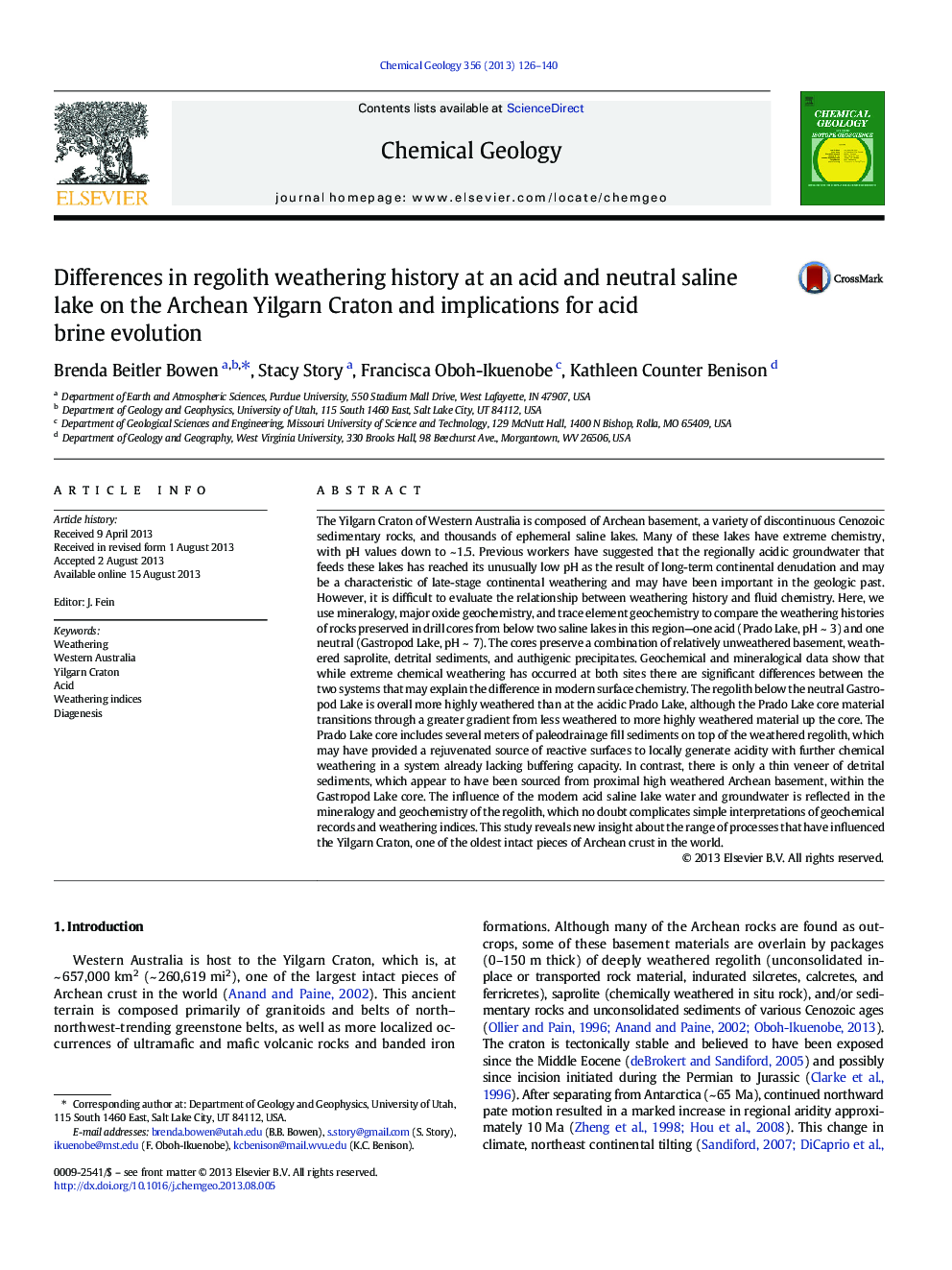| Article ID | Journal | Published Year | Pages | File Type |
|---|---|---|---|---|
| 4698899 | Chemical Geology | 2013 | 15 Pages |
•We compare weathering history of regolith below an acid and neutral saline lake.•The regolith below the neutral lake is more highly weathered than the acid system.•The acid core includes paleochannel sediments which may contribute to acidity.•The difference in basement and sediment weathering may explain surface chemistry.
The Yilgarn Craton of Western Australia is composed of Archean basement, a variety of discontinuous Cenozoic sedimentary rocks, and thousands of ephemeral saline lakes. Many of these lakes have extreme chemistry, with pH values down to ~ 1.5. Previous workers have suggested that the regionally acidic groundwater that feeds these lakes has reached its unusually low pH as the result of long-term continental denudation and may be a characteristic of late-stage continental weathering and may have been important in the geologic past. However, it is difficult to evaluate the relationship between weathering history and fluid chemistry. Here, we use mineralogy, major oxide geochemistry, and trace element geochemistry to compare the weathering histories of rocks preserved in drill cores from below two saline lakes in this region—one acid (Prado Lake, pH ~ 3) and one neutral (Gastropod Lake, pH ~ 7). The cores preserve a combination of relatively unweathered basement, weathered saprolite, detrital sediments, and authigenic precipitates. Geochemical and mineralogical data show that while extreme chemical weathering has occurred at both sites there are significant differences between the two systems that may explain the difference in modern surface chemistry. The regolith below the neutral Gastropod Lake is overall more highly weathered than at the acidic Prado Lake, although the Prado Lake core material transitions through a greater gradient from less weathered to more highly weathered material up the core. The Prado Lake core includes several meters of paleodrainage fill sediments on top of the weathered regolith, which may have provided a rejuvenated source of reactive surfaces to locally generate acidity with further chemical weathering in a system already lacking buffering capacity. In contrast, there is only a thin veneer of detrital sediments, which appear to have been sourced from proximal high weathered Archean basement, within the Gastropod Lake core. The influence of the modern acid saline lake water and groundwater is reflected in the mineralogy and geochemistry of the regolith, which no doubt complicates simple interpretations of geochemical records and weathering indices. This study reveals new insight about the range of processes that have influenced the Yilgarn Craton, one of the oldest intact pieces of Archean crust in the world.
